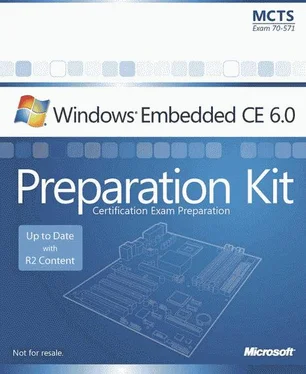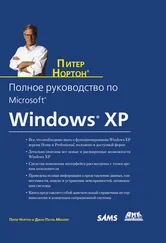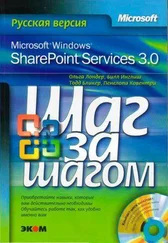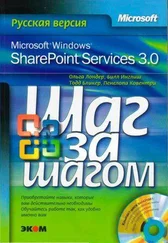Nicolas Besson - Microsoft Windows Embedded CE 6.0 Exam Preparation Kit
Здесь есть возможность читать онлайн «Nicolas Besson - Microsoft Windows Embedded CE 6.0 Exam Preparation Kit» весь текст электронной книги совершенно бесплатно (целиком полную версию без сокращений). В некоторых случаях можно слушать аудио, скачать через торрент в формате fb2 и присутствует краткое содержание. Город: Redmond, Год выпуска: 2008, Издательство: Microsoft, Жанр: Руководства, ОС и Сети, Программы, на английском языке. Описание произведения, (предисловие) а так же отзывы посетителей доступны на портале библиотеки ЛибКат.
- Название:Microsoft Windows Embedded CE 6.0 Exam Preparation Kit
- Автор:
- Издательство:Microsoft
- Жанр:
- Год:2008
- Город:Redmond
- ISBN:нет данных
- Рейтинг книги:5 / 5. Голосов: 1
-
Избранное:Добавить в избранное
- Отзывы:
-
Ваша оценка:
- 100
- 1
- 2
- 3
- 4
- 5
Microsoft Windows Embedded CE 6.0 Exam Preparation Kit: краткое содержание, описание и аннотация
Предлагаем к чтению аннотацию, описание, краткое содержание или предисловие (зависит от того, что написал сам автор книги «Microsoft Windows Embedded CE 6.0 Exam Preparation Kit»). Если вы не нашли необходимую информацию о книге — напишите в комментариях, мы постараемся отыскать её.
Microsoft Windows Embedded CE 6.0 Exam Preparation Kit — читать онлайн бесплатно полную книгу (весь текст) целиком
Ниже представлен текст книги, разбитый по страницам. Система сохранения места последней прочитанной страницы, позволяет с удобством читать онлайн бесплатно книгу «Microsoft Windows Embedded CE 6.0 Exam Preparation Kit», без необходимости каждый раз заново искать на чём Вы остановились. Поставьте закладку, и сможете в любой момент перейти на страницу, на которой закончили чтение.
Интервал:
Закладка:
Using Embedded Pointers<\/p> <\/div>
Embedded pointers are pointers that a caller passes to a function indirectly through a memory buffer. For example, an application can store a pointer inside the input buffer passed in to DeviceIoControl through the parameter pointer lpInBuf. The kernel will automatically check and marshal the parameter pointer lpInBuf, yet the system has no way to identify the embedded pointer inside the input buffer. As far as the kernel is concerned, the memory buffer simply contains binary data. Windows Embedded CE 6.0 provides no mechanisms to specify explicitly that this block of memory contains pointers.<\/p>
Because embedded pointers bypass the kernel's access checks and marshaling helpers, you must perform access checks and marshaling of embedded pointers in device drivers manually before you can use them. Otherwise, you might create vulnerabilities that malicious user-mode code can exploit to perform illegal actions and compromise the entire system. Kernel-mode drivers enjoy a high level of privileges and can access system memory that user-mode code should not be able to access.<\/p>
To verify that the caller process has the required access privileges, marshal the pointer, and access the buffer, you should call the CeOpenCallerBuffer function. CeOpenCallerBuffer checks access privileges based on whether the caller is running in kernel-mode or user-mode, allocates a new virtual address for the physical memory of the caller's buffer, and optionally allocates a temporary heap buffer to create a copy of the caller's buffer. Because the mapping of the physical memory involves allocating a new virtual address range inside the driver, do not forget to call CeCloseCallerBuffer when the driver has finished its processing.<\/p>
Handling Buffers<\/p> <\/div>
Having performed implicit (parameter pointers) or explicit (embedded pointers) access checks and pointer marshaling, the device driver is ready to access the buffer. However, access to the buffer is not exclusive. While the device driver reads data from and writes data to the buffer, the caller might also read and write data concurrently, as illustrated in Figure 6-10. Security issues can arise if a device driver stores marshaled pointers in the caller's buffer. A second thread in the application could then manipulate the pointer to access a protected memory region through the driver. For this reason, drivers should always make secure copies of the pointers and buffer size values they receive from a caller and copy embedded pointers to local variables to prevent asynchronous modification.<\/p> IMPORTANT<\/div>
Never use pointers in the caller's buffer after they have been marshaled, and do not use the caller's buffer to store marshaled pointers or other variables required for driver processing. For example, copy buffer size values to local variables so that callers cannot manipulate these values to cause buffer overruns. One way to prevent asynchronous modification of a buffer by the caller is to call CeOpenCallerBuffer with the ForceDuplicate parameter set to TRUE to copy the data from the caller's buffer to a temporary heap buffer.<\/p> <\/cite>
Synchronous Access<\/p> <\/div>
Synchronous memory access is synonymous with non-concurrent buffer access. The caller's thread waits until the function call returns, such as DeviceIoControl, and there are no other threads in the caller process that access the buffer while the driver performs its processing tasks. In this scenario, the device driver can use parameter pointers and embedded pointers (after a call to CeOpenCallerBuffer) without additional precautions.<\/p>
The following is an example of accessing a buffer from an application synchronously. This sample source code is an excerpt from an XXX_IOControl function of a stream driver:<\/p>
BOOL SMP_IOControl(DWORD hOpenContext, DWORD dwCode,<\/code> <\/p>
PBYTE pBufIn, DWORD dwLenIn, PBYTE pBufOut, DWORD dwLenOut,<\/code> <\/p>
PDWORD pdwActualOut) {<\/code> <\/p>
BYTE *lpBuff = NULL;<\/code> <\/p>
...<\/code> <\/p>
if (dwCode == IOCTL_A_WRITE_FUNCTION) {<\/code> <\/p>
// Check parameters<\/code> <\/p>
if ( pBufIn == NULL || dwLenIn != sizeof(AN_INPUT_STRUCTURE)) {<\/code> <\/p>
DEBUGMSG(ZONE_IOCTL, (TEXT("Bad parameters\r\n")));<\/code> <\/p>
return FALSE;<\/code> <\/p>
}<\/code> <\/p>
// Access input buffer<\/code> <\/p>
hrMemAccessVal = CeOpenCallerBuffer((PVOID) &lpBuff,<\/code> <\/p>
(PVOID) pBufIn, dwLenIn, ARG_I_PTR, FALSE);<\/code> <\/p>
// Check hrMemAccessVal value<\/code> <\/p>
// Access the pBufIn through lpBuff<\/code> <\/p>
...<\/code> <\/p>
// Close the buffer when it is no longer needed<\/code> <\/p>
CeCloseCallerBuffer((PVOID)lpBuff, (PVOID)pBufOut,<\/code> <\/p>
dwLenOut, ARG_I_PTR);<\/code> <\/p>
}<\/code> <\/p>
...<\/code> <\/p>
}<\/code> <\/p>
Asynchronous Access<\/p> <\/div>
Asynchronous buffer access assumes that multiple caller and driver threads access the buffer sequentially or concurrently. Both scenarios present challenges. In the sequential access scenario, the caller thread might exit before the driver thread has finished its processing. By calling the marshaling helper function CeAllocAsynchronousBuffer, you must re-marshal the buffer after it was marshaled by CeOpenCallerBuffer to ensure in the driver that the buffer remains available even if the caller's address space is unavailable. Do not forget to call CeFreeAsynchronousBuffer after the driver has finished its processing.<\/p>
To ensure that your device driver works in kernel and user mode, use the following approach to support asynchronous buffer access:<\/p>
■ Pointer parameters<\/strong>Pass pointer parameters as scalar DWORD values and then call CeOpenCallerBuffer and CeAllocAsynchronousBuffer to perform access checks and marshaling. Note that you cannot call CeAllocAsynchronousBuffer on a pointer parameter in user-mode code or perform asynchronous write-back of O_PTR or IO_PTR values.<\/p>
■ Embedded pointers<\/strong>Pass embedded pointers to CeOpenCallerBuffer and CeAllocAsynchronousBuffer to perform access checks and marshaling.<\/p>
To address the second scenario of concurrent access, you must create a secure copy of the buffer after marshaling, as mentioned earlier. Calling CeOpenCallerBuffer with the ForceDuplicate parameter set to TRUE and CeCloseCallerBuffer is one option. Another is to call CeAllocDuplicateBuffer and CeFreeDuplicateBuffer for buffers referenced by parameter pointers. You can also copy a pointer or buffer into a stack variable or allocate heap memory by using VirtualAlloc and then use memcpy to copy the caller's buffer. Keep in mind that if you do not create a secure copy, you're leaving in a vulnerability that a malicious application could use to take control of the system.<\/p>
Интервал:
Закладка:
Похожие книги на «Microsoft Windows Embedded CE 6.0 Exam Preparation Kit»
Представляем Вашему вниманию похожие книги на «Microsoft Windows Embedded CE 6.0 Exam Preparation Kit» списком для выбора. Мы отобрали схожую по названию и смыслу литературу в надежде предоставить читателям больше вариантов отыскать новые, интересные, ещё непрочитанные произведения.
Обсуждение, отзывы о книге «Microsoft Windows Embedded CE 6.0 Exam Preparation Kit» и просто собственные мнения читателей. Оставьте ваши комментарии, напишите, что Вы думаете о произведении, его смысле или главных героях. Укажите что конкретно понравилось, а что нет, и почему Вы так считаете.








